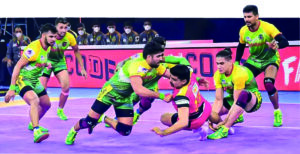Sunil Gavaskar, the first man to break the age-old records of Sir Don Bradman’s centuries, is one of the greatest batsmen India ever had
Byline: Shams Ur Rehman Alavi
For years, he singlehandedly tackled the fiercest pacers of the world, established his supremacy over West Indian speedsters, while batting without modern protective gear. The first man to break the age-old records of Sir Don Bradman’s centuries and erasing Sobers’ record of runs, he reigned for a long time. His greatness and achievements must be remembered and the stories of his chivalrous innings must be told to new generation. The youth in this era must realise that he is not just a former cricketer and celebrity commentator but was the pioneering and original great batsman in India, the batting maestro of Indian cricket.
Of records: 774 runs in four tests!
No Indian cricketer had dominated the game, got so much love and reached such stellar heights before Sunil Gavaskar, who batted like a cavalier, amassed runs and scored centuries after centuries in the second part of twentieth century. He took on the world cricket with a storm with 774 runs in four tests in his first series and rewrote record books with his art of batting, consistency, skills, temperament and technique. Even today, Gavaskar remains one of the biggest names in Indian cricket history and is arguably the greatest cricketer produced by the country, though later Tendulkar turned out to be a worthy successor and got huge popularity as well as success in modern age that saw media revolution. But, Gavaskar had indeed ruled the cricket world like a colossus through out the decade of 1970s and until his retirement in 1987.

1st man to reach the figure of 10k runs
In his career, he managed to erase almost all the major batting records in Test cricket. From a young 21-year-old who toured West Indies and amassed runs, Gavaskar’s strong commitment and craving for runs never diminished. By the time he retired, he was the first man to reach the figure of 10,000 runs in the history of the game and had the highest number of centuries (34). He had earlier gone past Don Bradman’s record of 29 centuries in Test cricket that was considered a major milestone. Gary Sobers, Geoff Boycott, Colin Cowdrey, Greg Chappel, IVA Richards had fallen short, and the records stood from late 1940s, till Gavaskar broke in mid-1980s. His concentration, determination, solid defence and supreme confidence along with his immense hunger for runs, had cast a spell on cricket lovers across the world. Gavaskar was the first man to reach 30 centuries.
Played without helmet
Many batsmen in test history have scored lot of runs but Gavaskar was in his own class. Without wearing helmet, Sunny took on the most lethal fast bowlers and blasted the deadly pace battery of West Indies for almost fifteen years.
Either, it was his 221 at Oval or the 236 at Madras, over the years facing the deadly quartet of Marshall, Garner, Holding and Roberts, Gavaskar displayed remarkable temperament throughout his career in international cricket.
The run machine
He was known as ‘Little Master’ and the most prolific batsman from Asia. For a while, Zaheer Abbas was termed ‘Asian run machine’ and it was also because of his centuries in County cricket, but soon the term belonged to Gavaskar. The West Indians were in awe of this man who could entertain them with his batting and who couldn’t be sent back to the dressing room, easily. Even the Calypso song was composed that praised Gavaskar as ‘The Wall’. Of course, it was not easy to bowl him out.
Early days
Sunil Gavaskar learnt his cricket in Mumbai, the nursery of cricket in India. He was fascinated by his uncle, Madhav Mantri, a former Test cricketer. In the Harris Shield, Gavaskar scored centuries after centuries. His father who gave him Rs 10 for every century had a tough time to keep the household budget from getting derailed. Gavaskar’s favourite heroes were the classy Rohan Kanhai, the stylist ML Jaisimha who came on the field with a kerchief around his neck and Viswanath. In 1970-71 Gavaskar’s debut was explosive. The entire cricket world was forced to sit up and take notice. As many as 774 runs in his first series against West Indies was enough to herald the arrival of this batsman. And, there was no stopping this typhoon for another 17 years.
Second to none
Gavaskar became the most prolific batsman in the world cricket and his stature was second to none. Viv Richards was more authoritative and had a reputation but Gavaskar’s consistency was unparalleled. Richards couldn’t reach as many runs or centuries despite his explosive batting style. That Gavaskar was an opener and unlike other great batsmen, he had to face the initial spells of the most deadly bowlers throughout his career. This makes Gavaskar’s feats even more astonishing. Gavaskar never got a batsman of his quality, talent and match as the other opener. Initially, Chetan Chauhan and much later, K Srikkanth, opened with him. But, it was quite often that search would be on for the other opening batsman. From Arun Lal to Lal Chand Rajput, many players got opportunities but none could provide him adequate support.
Focused on bowler, ball
Gavaskar was basically a test player. Despite the painfully slow 36 in 60 overs in a One Day International match in World Cup, Gavaskar soon adapted himself to the limited overs’ cricket too and ended his career with more than 3,000 runs at a handsome average of 35. Gavaskar’s ability to spot the ball was legendary and is remembered. He would rarely fall to the temptation of giving an edge by taking the bait to hit a slightly out of length delivery. His keen eyesight and focus on the bowler and the ball, was the chief reason behind his stupendous success. Sir Len Hutton had once said, “If Gavaskar had been born a British or Australian the critics would have bracketed him at par with Bradman”.
Forgotten gradually
As an opening batsman, he faced the fiery pacers and yet, it was one of the most difficult tasks for bowlers to get him out. His wicket used to be the most prized one for any rival team. Gavaskar is certainly among the greatest batsmen in Indian cricket’s history. The emergence of Tendulkar and his exploits in both forms of the game in modern era, got attention and memory of Gavaskar who had been at the centre of Indian cricket for long, faded a bit. As new generation saw Dravid, Dhoni and later Virat Kohli, strangely, many in the new generation became less aware about the altogether different level of dominance and impact Gavaskar had on the world cricket scene.

The other side
He was possibly the first millionaire in Indian sports. Gavaskar’s PMG (Professional Management Group) and his endorsement of various brands suggested his understanding of the world of figures. His books, ‘Idols’, ‘Sunny Days’, ‘One Day Wonders’ and Runs n’ Ruins were commercial successes and best sellers. After retirement, Gavaskar remained active and was associated with the board in different ways. He wrote columns and became a successful commentator. His son, Rohan, too knocked on the doors of international cricket, though he couldn’t succeed.
Anecdote
There is an interesting story that soon after Gavaskar’s birth in a hospital, he had been mistakenly swapped with another child by a staff. Had it not been a relative who had seen him closely at birth and saw the mark on the head, Gavaskar would have gone with another woman and been the son of a fisherwoman on the Western coast, spending life on the coast and boat, catching fish. But, the hospital staff’s carelessness came to light timely and he was spotted.
Passed the litmus test
No one had hit even ten centuries against WI but Gavaskar in his career scored 2,749 runs at an average of over 65 with 13 centuries, including three double tons against the WI team. This ultimate litmus test proved Gavaskar as the greatest Indian batsman.
After Vijay Merchant, he was the most complete and a formidable Indian batsman. As an opener his name is taken respectfully along with greats like Jack Hobbs, Sir Gary Sobers and Dennis Compton. His most runs were scored against top teams of the era–West Indies, Pakistan and Australia and none of his contemporaries faced such huge expectations that Gavaskar had to carry on his shoulders, every time he walked to bat.
The author is a senior journalist who can be contacted at shams.alavi@gmail.com




